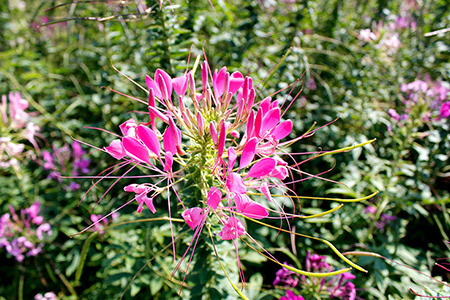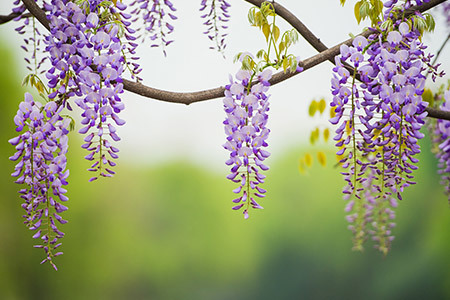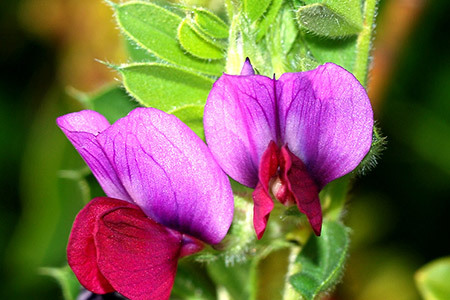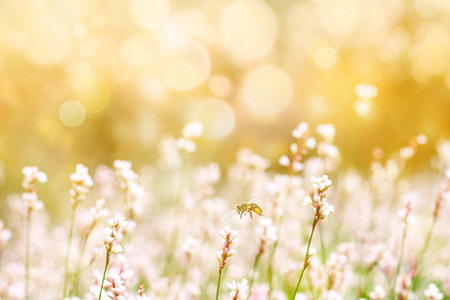How to cultivate seasonal flowers
Release time:
2021-06-16 00:00
Source:
For seasonal flower seedling cultivation, it is recommended to use plug trays or seedling trays. Directly sowing seasonal flowers in the ground can significantly increase the spread of soil-borne pests and diseases. The soil temperature is relatively low, and moisture and humidity are difficult to control, which can affect the germination rate. Using plug trays for seasonal flower seedlings also facilitates the statistics of germination rates. The seedling substrate should be loose, well-aerated, capable of retaining water and nutrients, clean, free from diseases, and have good fertility. Common substrates include peat soil, coconut coir, perlite, and vermiculite, which are generally mixed, for example, 85% peat soil, 10% perlite, and 5% vermiculite. The peat should not be too fine, with perlite particles ideally having a diameter of 3 to 4 mm, and vermiculite particles ideally having a diameter of 3 to 5 mm. Some fertilizers can be added to the substrate; most seeds germinate well in the substrate, but for certain plants like Amaranthus, Geranium, Marigold, and Peacock Grass, the pH value needs to be between 6.2 and 6.5. The temperature for seasonal flowers should be adjusted according to the specific variety's requirements. Most seeds germinate best at temperatures between 20-25°C; temperatures that are too high or too low will directly affect the germination rate. Humidity: Water management after sowing is crucial. In winter seedling cultivation, when the soil temperature is low at night, moisture loss is minimal, so there is no need to supplement water during the seedling stage or only a little is needed. If the soil temperature is high, spraying water should be done according to actual needs. In summer seedling cultivation, moisture evaporates particularly quickly, so water must be supplemented as needed. If the seasonal flower seeds are very fine, to avoid water washing away the seeds, a soaking method can be used to supplement water.
Previous Page
Next Page
Related News
Our company is a professional firm focused on selling flower seeds, forestry seeds, pasture/green manure seeds, and other types of seeds. We are dedicated to providing customers with high-quality and diverse seed products to meet various plant growth needs.
Manual for Cultivating Green Plants
Green plants are an indispensable part of our lives. They can purify the air, reduce noise, and provide a comfortable environment. This manual aims to help friends who love green plants to better cultivate various types of green plants, allowing them to thrive.
How to plant the willow-leaf embroidered chrysanthemum?
The willow-leafed chrysanthemum is a beautiful flower, loved for its unique leaf shape and vibrant blossoms. Below is an introduction on how to plant willow-leafed chrysanthemums.
Cultivation of Red Leaf Barberry
The red-leaf barberry is a deciduous shrub belonging to the Berberidaceae family and the Berberis genus, and it is a variety of barberry. It prefers sunlight, is somewhat shade-tolerant, cold-resistant, drought-resistant, and can withstand pruning. The branches are reddish-brown, and the leaves are oval-shaped, either solitary or clustered, remaining red throughout the year. The flowers bloom from May to June, are yellowish-white, and the fruits turn bright red and beautiful when ripe. It can be used to decorate flower beds and flower mirrors, and is an important tree species for color block combinations in landscape greening.
To take good care of flowers, watering them is crucial. However, many novice flower growers tend to be overly diligent, taking care of their plants even more frequently than they eat, and they feel that watering the plants a few times a day is still not enough. This can easily lead to root rot and death of the plants, which is indeed quite frustrating. In that case, why not grow a few water-loving flowers? The more you water them, the better they grow, making them perfect for those who love to water their plants frequently.
Urban greening is an important component of urban construction.
Urban greening is an important component of urban construction, aimed at improving the urban environment and enhancing the quality of life for residents. In this process, flowers play an indispensable role. They not only beautify urban spaces but also provide residents with a pleasant visual experience.
Product recommend








